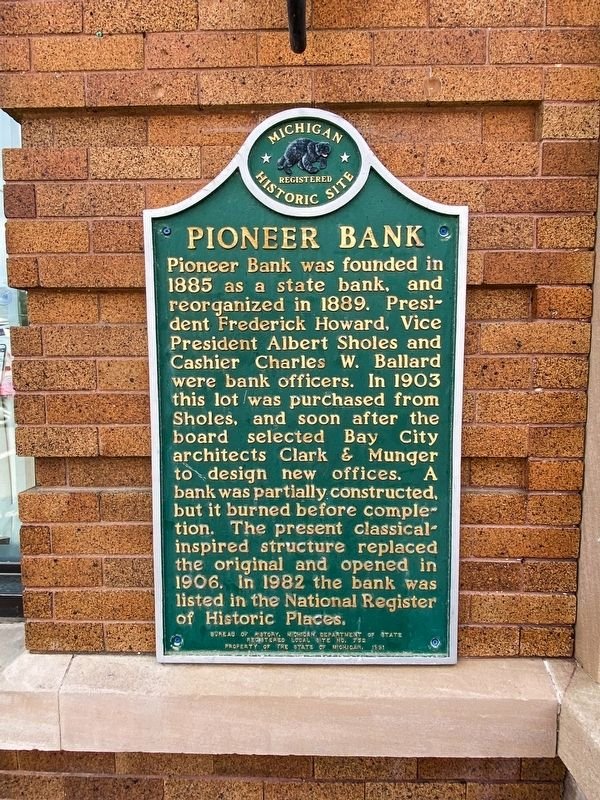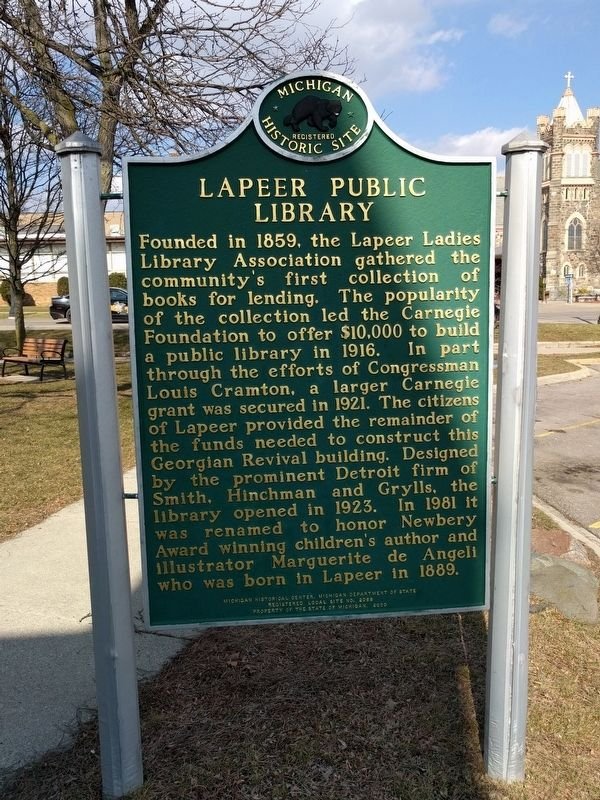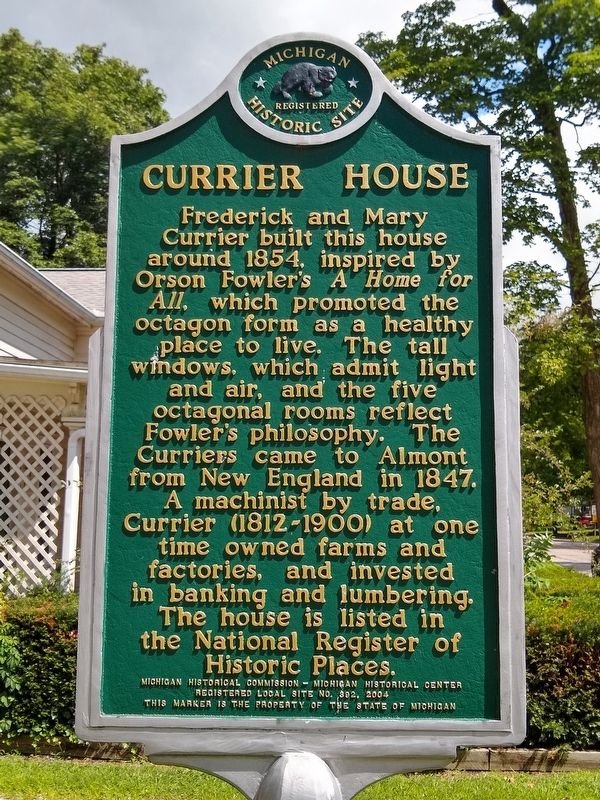United Methodist Church
This handsome Romanesque structure was completed in 1897 for the Methodist Protestant Church of Columbiaville. Local Methodists, with the assistance of circuit riders, had organized the church some forty years earlier.
The William Peter Mansion
This structure, completed in 1896, was the home of William Peter (1824-1899). Peter, a prominent Columbiaville businessman, was a “rags-to-riches” character.
The Tuttle House
Tuttle’s granddaughter, noted author Marguerite deAngeli, featured this house in her 1936 children’s book Ted and Nina have a Happy Rainy Day.
St. Patrick's Church
In 1884 the Diocese of Detroit acquired property here and built this simple Gothic-inspired church. The stained glass windows admit light into the sanctuary and honor the parish’s Irish founders.
Pioneer Bank
The present classical-inspired structure replaced the original and opened in 1906. In 1982 the bank was listed on the National Register of Historic Places.
Lapeer Public Library
Designed by the prominent Detroit firm of Smith, Hinchman, and Grylls, the library opened in 1923. In 1981 it was renamed to honor Newbery Award-winning children’s author and illustrator Marguerite de Angeli, who was born in Lapeer in 1889.
Lapeer County
The county seat, founded in 1831, was also named Lapeer. The organization of the county government took place in 1835. This courthouse, built-in 1839, is the oldest one still in use in Michigan.
Ladies Library Hall
The Ladies Library Association was established in 1871 to provide reading material at a small cost to the community.
Henry Stephens Memorial Library
Albert Stephens offered to fund the construction of a library in honor of his father. The following year local contractor Al Thayer erected this Georgian Revival building.
General Squier Park
General Squier held a great love for his community and showed this by establishing a country club in 1918 for the people of the entire area.
Dryden Depot
Purchased by the Grand Trunk in 1909, the station was used for passenger service until 1955 and as a freight agency until October 9, 1973. It was moved here in 1979 and opened as a museum in 1981.
Currier House
Frederick and Mary Currier built this house around 1854, inspired by Orson Fowler’s A Home for All, which promoted the octagon form as a healthy place to live.
Columbiaville Depot
In the nineteenth century, railroads provided the prime transportation link between small villages and the rest of the country. The first Columbiaville depot was built near this site in 1872.
Lapeer County Heritage Museum
Offering a historical experience with educational programming to the people of Lapeer County and visitors to the area
Davis Brothers Farm Shop
The Davis Brothers' Farm Shop Museum is one of three museums we operate, and was made possible by a generous donation of the land, buildings, and artifacts by Jim and Patti Davis.
Grand Trunk Railroad Depot - Imlay City
The Port Huron & Lake Michigan Railroad, later the Grand Trunk Western, arrived here in 1870. The first depot burned in 1917, and makeshift quarters served for a decade. This depot was built in 1927, according to Grand Trunk’s specifications. In 1930 an addition was built on the west end of the depot.
Imlay City Historical Museum
The Imlay City museum is owned and operated by the Imlay City Historical Commission, which collects, preserves, and interprets the heritage of the Imlay City area and instills an appreciation of local history through exhibits and educational programs.
Lapeer County Historic Courthouse
The Lapeer County Courthouse is now the oldest courthouse in Michigan which serves its original purpose. It remains a fine example of the dignified Doric style. The courthouse can be rented for your events.

















